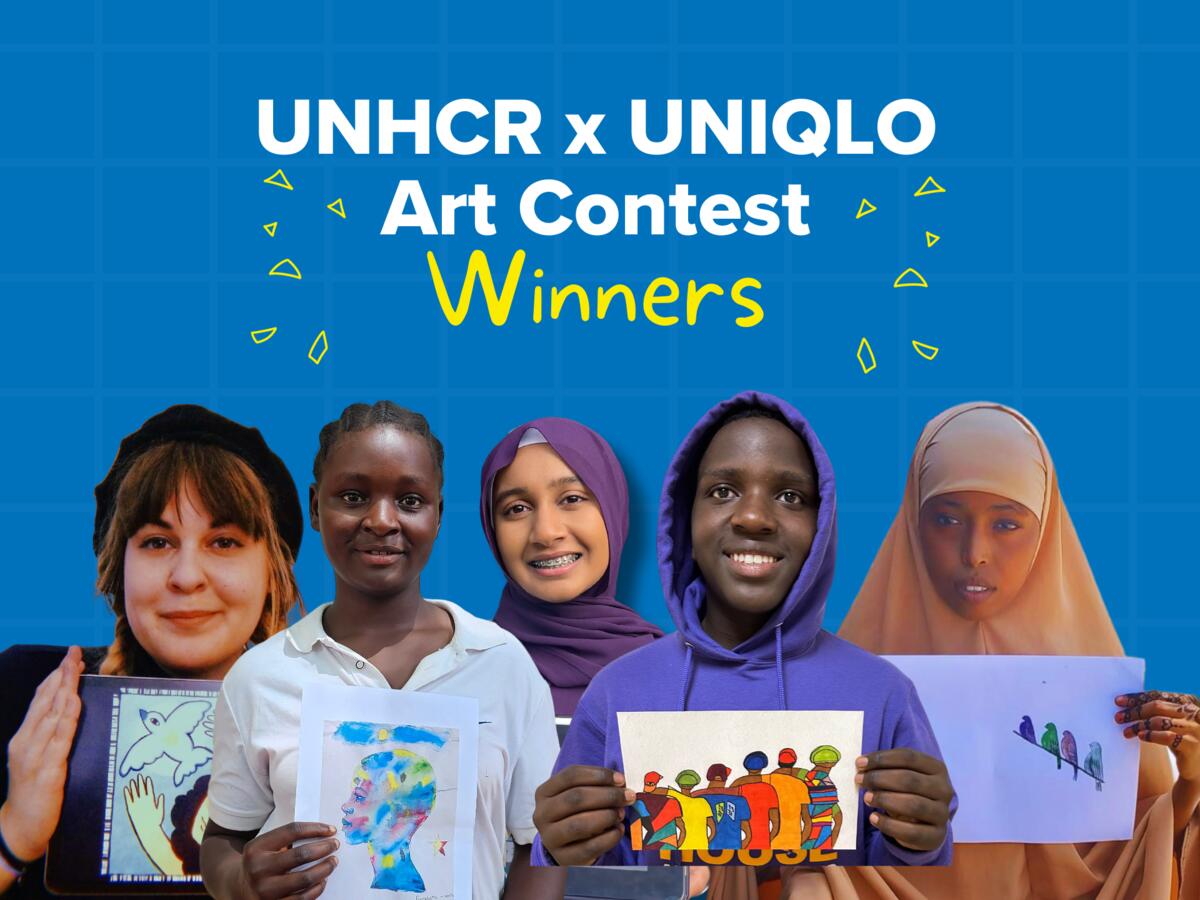French artist shares journey of discovery through Africa
French artist shares journey of discovery through Africa

PARIS, June 8 (UNHCR) - He's a traveller at heart, whether sailing round the world or trekking through Africa's deserts and forests. So it's only natural that his works are equally mobile, touring the schools of his native France to raise awareness of the cause of refugees and displaced people.
Earlier this month, French sailor-turned-artist Titouan Lamazou handed over to UNHCR in Paris some of his paintings, photographs and writings from his recent travels to Africa. The exhibition, titled "Refugees and the Internally Displaced in Africa", is travelling around high schools and universities till the end of the school year in June 2006.
Lamazou's life has been an interesting journey. As a sailor, he was world champion of the open sea race from 1986 to 1990. He won in 1990 the first edition of the Vendée Globe, the first non-stop solo race around the world. In 1993, he gave up sailing and devoted all his time to art. With his pens, brushes, and a camera slung across his shoulder, he now travels all around the world to paint, photograph and film remarkable women, and to publish travel notes.
In March 2003, Lamazou was selected by UNESCO to be its "Artist for Peace", considering his efforts to promote the organisation's message on women's rights. His works have been exhibited at the Louvre museum, at the Cartier Foundation and at UNESCO's headquarters in Paris.
Recently, he visited eastern Chad as part of his coverage for an 800-page book titled "Women of the World", to be published in October 2006. For two weeks, he stayed in the refugee camps around Iriba, Bahai and Goz Beida to paint portraits of refugee women and write about people's lives in Darfur, just across the border in western Sudan.
He tells the story of one refugee woman:
"Halimé belongs to the Four ethnic group in Darfur - moderate Muslim, non-Arabic Sahelians. One day, armed militiamen suddenly appeared in the sky and on trucks. They bombed, looted and burnt down the village. They killed the men and stole the livestock. Halimé had two sons. In the chaos, she saw her elder son running away with his grandmother. She does not know what has become of them, if they survived. The militia slit the throat of her second child, who was in her arms, before kidnapping her and six other girls in the village. Halimé was bound for seven days; her limbs are scarred for life. The Janjaweed militia left them naked in the bush. For about six or seven months in the camp in Chad, Halimé has been living alone among 17,000 refugees. The only person she has seen again is her brother. But he pushed her away because he said she had sinned with the Janjaweed and is eight months pregnant."
Lamazou recalls another tragic story:
"Not far from the Four area in the same camp are the Massalits. Khadidja is thankful her husband was spared a violent death when he died of natural causes a few months before the Janjaweed attacked their village and took away their livestock of 150 cattle, three camels, two donkeys and a horse. They came inside the hut and shot. Khadidja, left for dead, was lucky because the bullet stopped at her shoulder blade. But the militiamen aimed their guns at the knees of her two girls. Now handicapped, Mariam and Fatimé listen for the nth time as their mother tells of their misfortune. The three women do not have anything. Mariam has a child three or four years old, the only smile under the UNHCR tent. The father of the child has abandoned them. What to do with a family with an elderly person and two disabled people, a family whose members are not even able to do basic daily duties like collecting wood and water?"
These women's stories are similar to thousands of others settled in Chad or remaining in Darfur, living the same broken destinies as Halimé, Khadidja, Mariam and Fatimé.

"I left this area full of sadness and compassion," said Lamazou. "I realized the brutal reality, the multiple traumas that plague the refugee populations and the scope of the mission accomplished by relief teams."
In addition to Chad, the artist also visited Sudan, Uganda, Rwanda and the Democratic Republic of the Congo with the assistance of UNHCR offices there. He is now on his way to Asia for the next leg of his "Women of the World" project.
By Djerassem Mbaïorem









